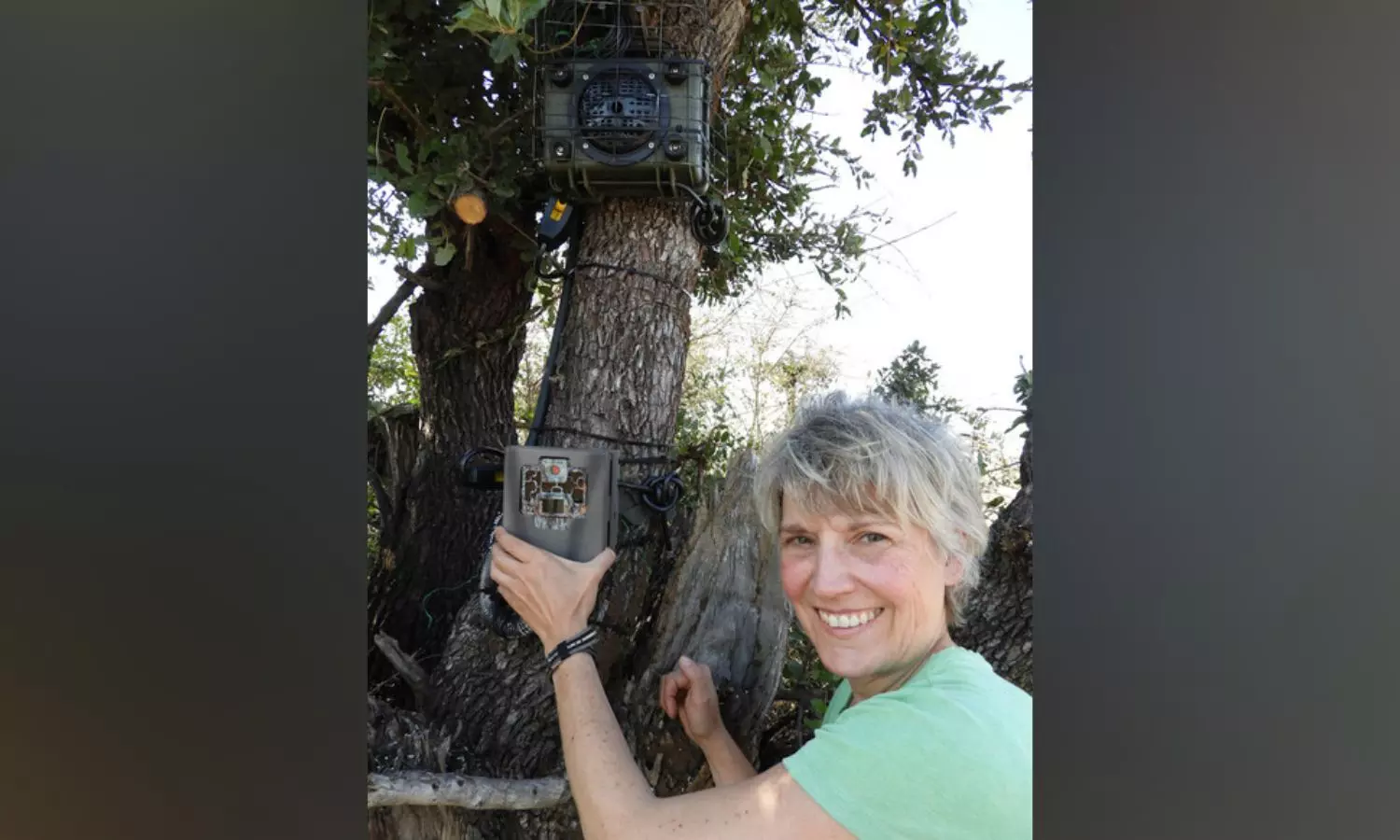Wild Things: How animals react to scariest sound on the Savanna
This leopard has unwittingly abandoned its lunch in the service of science. Researchers analyzed thousands of video recordings to reveal a hierarchy of fear in a suite of mammals.;

Michael Clinchy
Lesley Evans Ogden
Panting after chasing the impala now in its jaws, a leopard drags its prey to a shady spot beside a water hole. Before it can sit down to feast, a voice, seemingly out of nowhere, begins speaking calmly.
“It is very difficult to talk in Afrikaans …,” begins the bodiless voice. The leopard pauses, glances toward the source of the sound and then drops its hard-earned quarry and runs.
This leopard has unwittingly abandoned its lunch in the service of science. Researchers analyzed thousands of video recordings to reveal a hierarchy of fear in a suite of mammals living in and around Kruger National Park in South Africa.
While lions have been nicknamed the king of beasts, the videos show that for wild mammals on the savanna — from tiny antelopes to massive elephants — the scariest, most lethal predator of all is us. The sound of human voices, the researchers found, evokes more fear than the sounds of snarling and growling lions.
This underlines that our species is recognized as uniquely dangerous, “because we are super lethal,” said Michael Clinchy, a conservation biologist at Western University in London, Ontario.
The researchers hope that understanding this universal fear of humans could assist the goal of preventing wildlife poaching. The study the videos are drawn from, published Thursday in the journal Current Biology, is the latest in a series by Liana Zanette, also of Western University, and Dr. Clinchy, whose team studies fear.
Dr. Zanette, Dr. Clinchy and their colleagues have shown that it’s not just being eaten, but fear of being eaten that creates profound effects rippling from individuals to whole communities.
So turning to the savannas of South Africa, where a diversity of mammals have evolved for millenniums alongside lions and human hunters, Dr. Zanette and Dr. Clinchy were curious: Where did humans rank on the scale of scariness among these mammals?
Working with local colleagues from South Africa and other collaborators, the researchers set up equipment that has tested the fear responses of various animals. The motion-triggered automated behavioral response systems record video of passing mammals as they respond to a mix of sounds on a spectrum from potentially scary to harmless.
The researchers attached recorders and audio speakers to trees near 21 water holes, habitats that thirsty animals are reluctant to leave during the dry season, when the research took place.
The devices ran 24 hours a day for six weeks, playing clips of sound types in random order when triggered by movement. The benign sounds — the control in the experiment — were the songs of local birds. The more threatening sounds were dogs barking, gunshots, lions snarling and growling and humans talking calmly.
The human voices included women and men speaking in Tsonga, Northern Sotho, Afrikaans and English, gleaned from selected South African news clips — with a smattering of soccer, of course, in case mammals were short on sport.

